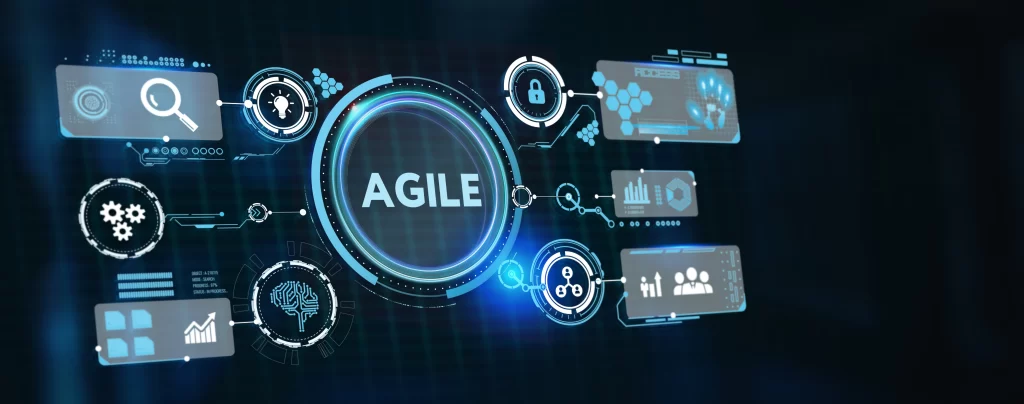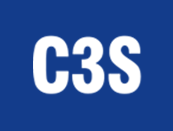In the ever-evolving landscape of business and technology, the discipline of project management stands as a cornerstone for successful ventures. Yet, the very ground beneath project managers’ feet is constantly shifting, demanding a nuanced understanding of diverse methodologies. For anyone considering a diploma in project management, or already immersed in their studies, grasping the fundamental differences and applications of “Agile vs traditional project management” isn’t just academic; it’s a critical skill for career longevity and project success. The choice between these two dominant approaches can make or break a project, influencing everything from team dynamics to final delivery.
“The modern project manager is less a taskmaster and more a strategic facilitator, navigating complexity with a versatile toolkit,” says Prof David Weir, Chief Patron of Academy of Policy and Research. This versatility is precisely what a robust diploma in project management aims to cultivate, preparing students for the multifaceted demands of contemporary industries. If you’re looking to study project management abroad, particularly in a dynamic European hub, understanding this foundational dichotomy is your first step.
Introduction to Project Management Methodologies
Project management methodologies are structured approaches used to plan, execute, and control projects. They provide frameworks, processes, and tools to guide a project from initiation to closure, ensuring objectives are met efficiently and effectively. Historically, a more linear approach dominated the field, but rapid technological advancements and market shifts have necessitated more adaptive methods. The debate of “Agile vs traditional project management” is not about one being inherently superior, but rather about choosing the right tool for the right job. A comprehensive Project Management Diploma Syllabus will delve deep into both, equipping future leaders with the discernment needed to apply them appropriately.
The global demand for skilled project managers continues to rise, making a diploma in project management an increasingly attractive qualification. Whether you choose to study project management abroad or locally, the core principles remain, but the application varies wildly.
What is Traditional Project Management?
Traditional project management, often synonymous with the Waterfall methodology, is a sequential, linear approach to project execution. It’s characterized by distinct phases that flow downwards, much like a waterfall, with each phase needing to be completed before the next one begins. This method emphasizes detailed upfront planning, extensive documentation, and strict adherence to the initial scope.
The typical phases of Traditional Project Management include:
- Initiation: Defining the project, its objectives, and scope.
- Planning: Developing a detailed project plan, including tasks, timelines, resources, and budget. This phase is exhaustive, aiming to foresee all possible contingencies.
- Execution: Carrying out the planned tasks.
- Monitoring & Control: Tracking progress against the plan, managing changes, and ensuring quality.
- Closure: Formal completion of the project, including delivery, documentation, and team disbandment.
“Traditional project management, with its rigorous planning phases, is like building a skyscraper; you need every blueprint perfect before you lay the first brick,” says Prof (Dr) John Cokley, a veteran academician and researcher in business of journalism, entrepreneurship and innovation, who has taught at multiple Australian universities including the University of Queensland and Griffith University. This approach is well-suited for projects with stable requirements, a clear scope, and predictable outcomes, such as construction, manufacturing, or large-scale infrastructure projects where changes late in the cycle are prohibitively expensive.
Key characteristics of Traditional Project Management:
- Sequential Flow: Phases are completed one after another.
- Detailed Upfront Planning: All requirements and designs are finalized before development begins.
- Extensive Documentation: Every phase generates comprehensive documentation.
- Fixed Scope: Changes to scope are discouraged and managed through formal change control processes.
- Predictability: Aims for high predictability in terms of cost, time, and scope.
However, its rigidity can be a significant drawback in environments where requirements are fluid or customer feedback is needed early and often. For a diploma in project management student, understanding these nuances is key to appreciating the “Agile vs traditional project management” debate. Many project management courses in Spain still cover Waterfall extensively, recognizing its continued relevance in specific sectors.
What is Agile Project Management?
Agile project management emerged as a response to the limitations of traditional methods, particularly in software development where requirements often change rapidly. It is an iterative and incremental approach that emphasizes flexibility, collaboration, and continuous improvement. The core philosophy is encapsulated in the Agile Manifesto, which prioritizes:
- Individuals and interactions over processes and tools.
- Working software over comprehensive documentation.
- Customer collaboration over contract negotiation.
- Responding to change over following a plan.
“Agile is about embracing change and delivering value in small, frequent increments, much like a startup constantly iterating on its product,” says Prof Philip Mayer, a London-based faculty at Regent’s University London. This methodology thrives on short development cycles, known as sprints (in Scrum) or continuous flow (in Kanban), allowing teams to adapt to evolving requirements and incorporate feedback quickly.
Common Agile Frameworks:
- Scrum: A framework for developing and sustaining complex products, characterized by roles (Product Owner, Scrum Master, Development Team), events (Sprint Planning, Daily Scrum, Sprint Review, Sprint Retrospective), and artifacts (Product Backlog, Sprint Backlog, Increment).
- Kanban: A method for managing work with an emphasis on just-in-time delivery while not overloading the team members. It visualizes workflow, limits work in progress, and maximizes efficiency.
Key characteristics of Agile Project Management:
- Iterative & Incremental: Projects are broken into small, manageable iterations.
- Flexibility: Adapts to changing requirements throughout the project lifecycle.
- Customer Collaboration: Continuous involvement of stakeholders and customers.
- Early & Continuous Delivery: Working increments are delivered frequently.
- Self-organizing Teams: Teams are empowered to decide how best to accomplish their work.
Agile is particularly suitable for projects with evolving requirements, high uncertainty, or where rapid feedback loops are crucial. A diploma in project management that focuses on contemporary practices will heavily feature Agile methodologies, preparing students for the dynamic demands of tech and innovation sectors. Many project management courses in Spain, particularly those at a best business school in Barcelona, are now deeply integrated with Agile principles.

Key Differences Between Agile and Traditional
The distinction between “Agile vs traditional project management” is not merely semantic; it represents fundamentally different philosophies and operational models. Understanding these differences is paramount for any aspiring project manager.
Traditional Project Management (Waterfall)
- Approach: Sequential, linear, phase-driven.
- Planning: Detailed upfront planning; all requirements defined at the start.
- Scope: Fixed scope; changes are managed through formal change control.
- Customer Involvement: Limited, primarily at the beginning and end of phases.
- Delivery: Single, large delivery at the end of the project.
- Team Structure: Hierarchical; project manager has central control.
- Documentation: Extensive, comprehensive documentation.
- Risk Management: Identified and planned for upfront; managed through formal processes.
- Change: Resists change; costly to implement changes late in the cycle.
Agile Project Management (e.g., Scrum)
- Approach: Iterative, incremental, adaptive.
- Planning: Flexible planning; requirements evolve and are refined throughout.
- Scope: Flexible scope; adapts to changing needs and priorities.
- Customer Involvement: Continuous collaboration; customer feedback integrated frequently.
- Delivery: Frequent, small, working increments delivered throughout.
- Team Structure: Self-organizing, cross-functional teams; shared leadership.
- Documentation: Just enough documentation; emphasis on working product.
- Risk Management: Risks are continuously identified and mitigated in each iteration.
- Change: Embraces change; adapts easily to evolving requirements.
“The core of ‘Agile vs traditional project management’ lies in their relationship with change. Traditional resists it, Agile embraces it,” says Dr P. R. Datta, executive chair of Centre for Business & Economic Research (CBER) based in London, adding that this fundamental difference dictates their suitability for various project environments. A well-rounded Project Management Diploma Syllabus will provide practical exercises that highlight these differences.
Which One Do Employers Prefer in 2025?
In 2025, the landscape of project management is more dynamic than ever. The question isn’t simply “Agile vs traditional project management,” but rather, Which approach best fits the specific project and organizational context? However, there’s a clear trend: versatility and adaptability are highly prized.
“Employers in 2025 are not looking for project managers who are dogmatic about one methodology. They seek those who can fluidly apply the right approach, or even blend them, to achieve strategic objectives,” says Dr Daba Chowdhury, an associate professor in Digital Entrepreneurship at the Christ Church Business School in Canterbury Christ Church University (CCCU), adding that hybrid models are becoming the norm.
While Traditional (Waterfall) project management still holds its ground in sectors like construction, infrastructure, and large-scale manufacturing where requirements are stable and regulatory compliance is paramount, Agile methodologies have become the gold standard in technology, software development, marketing, and innovation-driven industries. The ability to pivot quickly, respond to market feedback, and deliver value incrementally is crucial in these fast-paced environments.
“The demand for Agile practitioners is surging, but a foundational understanding of traditional principles remains valuable for complex, long-term projects,” says Dr Rajat Baisya, a global management consultant and former dean of IIT Delhi, adding that this dual proficiency is what truly sets a project manager apart. Therefore, a diploma in project management that offers a balanced curriculum covering both Agile vs traditional project management is highly advantageous.
Many organizations are adopting hybrid approaches, combining elements of both methodologies. For instance, a project might use a Waterfall approach for overall planning and high-level milestones, but then employ Agile sprints for specific development phases. This requires project managers who are not only proficient in each method but also skilled in integrating them effectively.
If you’re looking to study project management abroad, particularly in a region known for innovation like Europe, you’ll find that institutions like the best business school in Barcelona are heavily emphasizing Agile and hybrid models, reflecting industry demand. The job market in 2025 rewards project managers who can demonstrate flexibility, critical thinking, and a deep understanding of how to tailor their approach to different project complexities. This is why a comprehensive Project Management Diploma Syllabus is so important.
How a Diploma in Project Management Prepares You?
Pursuing a diploma in project management is no longer just a career enhancer; it’s becoming a fundamental requirement for aspiring and current project managers. A well-structured diploma program provides a systematic understanding of project principles, tools, and methodologies, far beyond what can be learned through on-the-job experience alone.
“A formal diploma in project management provides the theoretical bedrock and practical frameworks necessary to navigate real-world project complexities,” says Prof Ian Nisbet, Principal and Director of Online MBA program at London College of Business, adding, It equips students with a common language and a structured approach that is recognized globally.
A robust Project Management Diploma Syllabus will not only introduce you to both “Agile vs traditional project management” but will also provide hands-on experience through case studies, simulations, and group projects. This practical application is crucial for developing the judgment needed to select and adapt methodologies.
For those who study project management abroad, particularly in a vibrant academic environment, the benefits extend beyond just curriculum. You gain exposure to diverse cultural perspectives on project management, international best practices, and a global network of peers and instructors. This global mindset is increasingly valuable in today’s interconnected business world.
“A diploma program ensures that students don’t just learn what Agile or Traditional are, but when and how to apply them effectively, understanding their strengths and weaknesses in different contexts,” says Pretam Pandey, head of operations and finance, C3S Business School. This practical understanding is what employers truly seek.

Overview of what’s covered in a Project Management Diploma Syllabus
A comprehensive Project Management Diploma Syllabus is designed to provide a holistic understanding of the discipline, covering both foundational principles and contemporary practices. While specific modules may vary between institutions, a high-quality program will typically include:
- Project Initiation and Planning: Defining project scope, objectives, stakeholders, feasibility studies, and developing detailed project plans. This often includes elements from traditional planning.
- Project Execution and Control: Managing resources, timelines, budgets, quality, and communications. This is where the practical application of methodologies comes into play.
- Risk Management: Identifying, assessing, and mitigating project risks, a critical component regardless of the methodology.
- Stakeholder Management: Engaging and managing expectations of all parties involved in or affected by the project.
- Quality Management: Ensuring project deliverables meet specified quality standards.
- Procurement Management: Managing external vendors and contracts.
- Agile Methodologies: In-depth study of Scrum, Kanban, Lean, and other Agile frameworks, including their principles, roles, events, and artifacts. This is where the “Agile vs traditional project management” comparison becomes very practical.
- Traditional Methodologies: A thorough understanding of Waterfall and other linear approaches, including their strengths and weaknesses.
- Project Leadership and Team Management: Developing essential leadership, communication, and team-building skills.
- Project Management Tools and Software: Practical training on industry-standard project management software.
- Business Acumen and Strategy: Understanding how projects align with organizational strategic goals.
“A good Project Management Diploma Syllabus is a blend of theory and practical application, ensuring graduates are ready for the complexities of the real world,” says Prof Michael Taylor, Registrar of the London College of Business based in London, adding that the curriculum is constantly updated to reflect industry trends. Many project management courses in Spain, particularly at a best business school in Barcelona like C3S Business School, pride themselves on offering such a current and comprehensive syllabus.
“Our curriculum is designed to make students adaptable, capable of leading projects whether they are purely Agile, purely Traditional, or a hybrid,” says Dr Marc Sanso, head of academics, Aspire Business School, Barcelona. This adaptability is the hallmark of a truly effective project manager in 2025.
Top Project Management Skills for 2025 and Beyond
Beyond methodological knowledge, successful project managers in 2025 and beyond will need a diverse set of soft and hard skills. A diploma in project management is designed to cultivate these essential competencies.
- Adaptability and Flexibility: The ability to pivot quickly in response to changing requirements, market conditions, or unforeseen challenges. This is paramount in the “Agile vs traditional project management” debate, as it allows for fluid transitions between or blends of methodologies.
- Digital Literacy and Tech Savvy: Proficiency with project management software, collaboration tools, data analytics platforms, and an understanding of emerging technologies like AI and automation. “Understanding the digital tools is no longer optional; it’s foundational,” says Hiren Raval, CEO of C3S Business School, adding that this includes leveraging AI for predictive analytics in project planning.
- Strong Communication Skills: The ability to articulate complex ideas clearly, listen actively, and manage stakeholder expectations across diverse teams and cultures. This is crucial for both traditional documentation and Agile daily stand-ups.
- Leadership and Emotional Intelligence: Inspiring and motivating teams, managing conflict, fostering collaboration, and understanding team dynamics. “Effective leadership in project management is about empathy and foresight,” says Prof David M J Graves, who specializes in Private and Public Corporate Governance issues, National and International Financial Crime, and all fraud related offenses.
- Problem-Solving and Critical Thinking: The capacity to analyze complex situations, identify root causes, and devise effective solutions.
- Data Analysis and Decision-Making: Using data to inform project planning, track progress, identify risks, and make informed decisions.
- Strategic Thinking: Aligning project goals with broader organizational objectives and understanding the project’s impact on the business. “Projects must always serve the larger strategic vision of the organization,” says Prof Sarat C Das, director of research, collaborations and publications at C3S Business School.
- Change Management: Guiding teams and stakeholders through transitions and new processes.
- Risk Management: Proactively identifying, assessing, and mitigating potential threats to project success.
- Stakeholder Engagement: Building and maintaining positive relationships with all project stakeholders, from team members to senior executives and external clients.
“A diploma in project management provides the structured environment to develop these skills, bridging the gap between theoretical knowledge and practical application,” says Prof Asraful Khan, a faculty at Arden University, London. Many project management courses in Spain are specifically designed to foster these competencies.
Conclusion: Why Understanding Both Methodologies Matters
In conclusion, the debate of “Agile vs traditional project management” is not a zero-sum game. Neither methodology is universally superior; their effectiveness is entirely dependent on the project’s unique characteristics, organizational culture, and environmental context. For any individual aspiring to a successful career in project management, a deep understanding of both approaches, coupled with the wisdom to choose and adapt them, is paramount.
“The future of project management lies in methodological agnosticism – the ability to pick and mix the best elements from both Agile and Traditional to create bespoke solutions,” says Dr. Maria Fernanda Dugarte, dean and director of Institutional Affairs at C3S Business School. This flexibility is what distinguishes a truly competent project manager in 2025.
A comprehensive diploma in project management offers the ideal pathway to acquire this essential versatility. It provides the foundational knowledge of Traditional methodologies, the adaptive mindset of Agile, and the critical thinking skills to apply them effectively. Whether you choose to study project management abroad or locally, the investment in such a program will equip you with a competitive edge.
“Graduates of a robust Project Management Diploma Syllabus are not just certified; they are truly prepared to lead complex projects in any industry,” says Professor Martin Samy, responsible for managing the academic delivery of PhD programs at the School of Accounting, Finance and Economics at Leeds Beckett University, UK.
The demand for project managers who can navigate the complexities of both “Agile vs traditional project management” will only grow. Institutions like C3S Business School, widely regarded as a best business school in Barcelona, offer leading project management courses in Spain that are specifically designed to cultivate this dual expertise.
“Our programs emphasize practical application, ensuring students can immediately contribute value to any project environment,” says Professor Mani Tahriri, the IT faculty at C3S Business School, adding that the blend of theory and hands-on experience is crucial.
“The ability to understand and implement both Agile and Traditional approaches positions project managers as indispensable assets in today’s diverse business landscape,” says Dr Martin Wright, a visiting faculty to multiple UK universities who earlier served as Director of the Central Institute for the Study of Public Protection and Head of the Department of Uniformed Services, overseeing degree programs in Policing, Fire & Rescue, and Armed Forces.
“Embracing both methodologies provides a broader perspective and more tools in a project manager’s arsenal,” says Prof Eduardo Ortiz from C3S Business School, adding that this holistic view is key to innovation.
“The market rewards those who are adaptable and can speak the language of both methodologies,” says Dr Pankaj Paul, a visiting professor serving with multiple universities and a former Managing Editor of Knowledge@Wharton at The Wharton School and Managing Editor of The Hindustan Times and The News Journal Media Group.
“Our goal is to produce project managers who are not just knowledgeable, but truly strategic thinkers,” says Bela Raval, admission head of C3S Business School, adding, and a diploma in project management is the first step.
“The blend of methodologies is what makes a project manager truly valuable in the modern era,” says Mr David Orford, the former Associate Dean of Newport Business School at the University of Wales Newport, UK.
“At C3S Business School, we ensure our Project Management Diploma Syllabus is cutting-edge, reflecting global industry needs,” says Prof Renato Valer, faculty at C3 Business School, Spain, the top business school in Barcelona, adding, preparing students for roles anywhere in the world.
“The real skill is knowing when to be rigid and when to be flexible,” says Prof David Waite, currently teaching at UK’s oldest private college St. Patrick’s College, London.
“Our graduates are equipped to lead, whether it’s a tech startup or a major infrastructure project,” says Dr. Fernando Velasquez Villalba, a senior faculty at C3 Business School, Spain, adding that this dual competency is a major advantage.
“The future belongs to project managers who are methodology-agnostic and truly problem-solvers,” says Dr. Jose Bifano, a prominent academician and researcher and a visiting faculty at C3S Business School, adding that a diploma in project management provides this foundation.
“Understanding the nuances of ‘Agile vs traditional project management’ is crucial for optimizing workflows and team performance,” says Dr. Yelena V. Smirnova at C3S Business School, adding that this is a core component of their Project Management Diploma Syllabus.
“The ability to integrate different approaches is what defines leadership in complex projects,” says Professor Xavier Puertas at C3S Business School, adding that this is a key takeaway from their project management courses in Spain.
“We focus on practical application, so students can immediately apply what they learn about ‘Agile vs traditional project management’ in real-world scenarios,” says Dr. Sergey Yablonsky at C3S Business School.
“Gender equality in tech and business also benefits from adaptable project management, as diverse teams often thrive with flexible methodologies,” says Professor Maud Christophe, who is known for popularizing gender equality in the business tech industry and faculty at C3S Business School.
“For those looking to study project management abroad, particularly at a best business school in Barcelona, the exposure to global case studies on Agile vs traditional project management” is invaluable, says Professor Josep Torrente, a hospitality management faculty at C3S Business School, a top business school in Barcelona.
Ultimately, securing a diploma in project management from a reputable institution like C3S Business School in Barcelona is an investment in a future where adaptability and comprehensive methodological understanding are your greatest assets. The debate of “Agile vs traditional project management” will continue, but the skilled project manager will always be ready for either.





